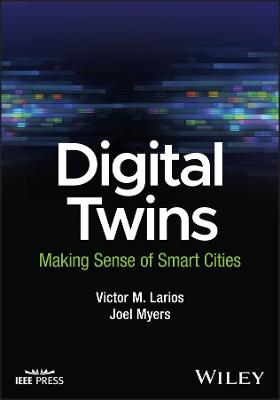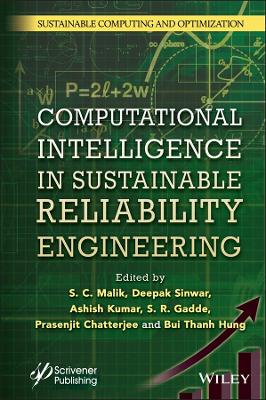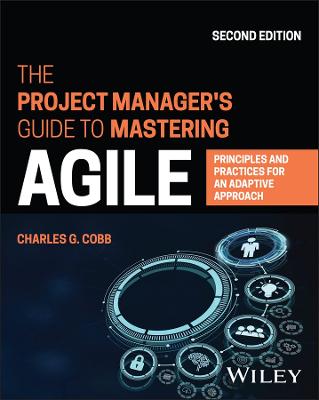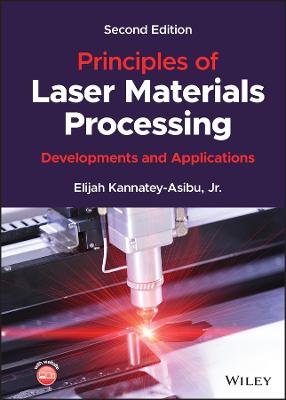Evolving Networking Technologies
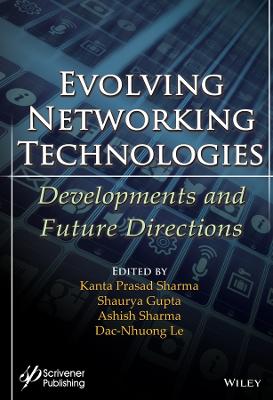 -10%
portes grátis
-10%
portes grátis
Evolving Networking Technologies
Developments and Future Directions
Sharma, Kanta Prasad; Sharma, Ashish; Gupta, Shaurya; Le, Dac-Nhuong
John Wiley & Sons Inc
02/2025
272
Dura
Inglês
9781119836209
15 a 20 dias
666
Descrição não disponível.
List of Figures xv
List of Tables xix
Foreword xxi
Preface xxiii
Acknowledgments xxv
Acronyms xxvii
1 5G Technologies, Architecture and Protocols 1
Shweta Bondre, Ashish Sharma, Vipin Bondre
1.1 Evolution of Wireless Technologies 2
1.2 5G Cellular Network Architecture 4
1.2.1 5G E2E Network Architecture 6
1.2.2 Network Slicing Architecture 6
1.2.3 NFV Management and Orchestration 7
1.2.4 NGMN Envisioned 5G Design 9
1.3 5G Energy Efficiency 10
1.3.1 Full Duplex 10
1.3.2 High Network Data Rate 11
1.3.3 Dense Small Cell Deployment 11
1.3.4 Massive MIMO Antennas 11
1.4 Security in 5G 12
1.5 5G Applications 13
1.5.1 Rapid Data Transmission 13
1.5.2 5G Flexibility for Smart Mobility 13
1.5.3 5G in Smart Cities 14
1.5.4 5G Augmented Reality 14
1.6 Conclusion 14
References 15
2 Scope and Challenges of IoT and Blockchain Integration 21
Sara Shree, Monika Sharma
2.1 Introduction 22
2.2 Literature Review 22
2.3 Internet of Things and Its Centralized System 23
2.3.1 Application Layer 24
2.3.2 Network Layer 24
2.3.3 Device Layer 25
2.4 Blockchain Technology 25
2.4.1 Characteristics of Blockchain 25
2.4.2 Working Mechanisms of Blockchain 26
2.4.3 Example of Blockchain Transactions 27
2.4.4 Need for Blockchain Technology 27
2.5 Integration of Blockchain and IoT Technology 28
2.5.1 Interactions of IoT and Blockchain Integrations 29
2.5.2 Blockchain Platforms for IoT 30
2.5.3 Advantages of Integrating IoT with Blockchain 31
2.5.4 Challenges of Blockchain and IoT Integration 33
2.5.5 Applications of IoT-Blockchain Integration 34
2.6 Conclusion 36
References 37
3 Data Communication and Information Exchange in Distributed IoT Environment 41
Rachna Jain, Kanta Prasad Sharma, Rana Majumdar, Dac-Nhuong Le
3.1 Introduction 42
3.2 IoT Technologies and Their Uses 43
3.2.1 How WSN Works 43
3.2.2 Communication with RIFD-Enabled Devices 43
3.2.3 WWW - Things on the Web 44
3.3 Centralized vs. Distributed Approach 44
3.3.1 Centralized System and Its Physiognomies 45
3.3.2 Advantages 45
3.3.3 Disadvantages of Centralized System 45
3.4 Distributed System Architecture 46
3.4.1 Advantages of Distributed System Architecture 46
3.4.2 Drawbacks of Distributed System Architecture 47
3.5 Data Communication Taking Place in Distributed IoT Environment 48
3.5.1 Internet of Things (IoT) Protocol 48
3.5.2 Constrained Application Protocol (CoAP) 48
3.5.3 Message Queuing Telemetry Transport (MQTT) 48
3.5.4 Wi-Fi 49
3.5.5 Zigbee 49
3.5.6 Extensible Messaging and Presence Protocol (XMPP) 49
3.5.7 Data Distribution Service (DDS) 49
3.5.8 Advanced Message Queuing Protocol (AMQP) 49
3.5.9 Smart Home and IoT Applications: An Example 50
3.5.10 IoT Services, Machines and Applications 50
3.5.11 Sensor-Based IoT Services 50
3.5.12 Application in IoT Environment 50
3.5.13 Future of IoT in a COVID-19 Pandemic 51
3.6 Conclusion 51
References 52
4 Contribution of Cloud-Based Services in Post-Pandemic Technology Sustainability and Challenges: A Future Direction 55
Neeraj Kumar Pandey, Sampoorna Kashyap, Ashish Sharma, Manoj Diwakar
4.1 Introduction 56
4.2 Cloud-Based Solutions 59
4.2.1 Information and Communications Technology 59
4.2.2 Artificial Intelligence and Machine Learning 59
4.2.3 Data Analytics and Business Intelligence 62
4.3 Impact of Industry 4.0 in the Cloud Computing Industry 63
4.3.1 Agriculture and Forestry 64
4.3.2 Entertainment, Media, and Hospitality 65
4.3.3 Robotics and Automation, Manufacturing and Maintenance 65
4.4 Significance and Impact of Cloud in the Pandemic Outbreak 66
4.5 Conclusion and Future Directions 66
References 67
5 Network Security in Evolving Networking Technologies: Developments and Future Directions 75
Uma Yadav, Ashish Sharma
5.1 Introduction 76
5.2 Background on Attacks, Security Services and Challenges 77
5.2.1 Types of Attacks Possible on Network 77
5.2.2 Security Services 79
5.2.3 Challenges 80
5.3 Evolution of Network Security Strategies 81
5.4 Different Evolving Security Approaches 82
5.4.1 Conventional Approaches 83
5.4.2 Confidentiality Approaches 84
5.4.3 Privacy Approaches 86
5.4.4 Availability Approaches 87
5.4.5 Modern Approaches 88
5.5 Discussion 91
5.6 Conclusion 92
References 92
6 The State of CDNs Today and What AI-Assisted CDN Means for the Future 97
Darothi Sarkar, Rana Majumdar, Dac-Nhuong Le
6.1 Introduction 98
6.2 CDN and Its Challenges 99
6.2.1 Replica Server Placement 99
6.2.2 Content Replication 100
6.2.3 Request Routing 101
6.2.4 Load Balancing 102
6.3 Importance of AI in CDN 103
6.4 Pandemic and CDN 104
6.5 Security Threats in CDN 105
6.6 Conclusion 106
References 107
7 Challenges and Opportunities in Smart City Network Management Through Blockchain and Cloud Computing 111
Jayden Pires, Vinod Kumar Shukla, Leena Wanganoo, Sonali Vyas
7.1 Introduction 112
7.2 Literature Review 112
7.2.1 Smart City and Network Management 113
7.2.2 Blockchain and Network 116
7.3 Blockchain and Smart City 118
7.3.1 Smart Healthcare 118
7.3.2 Smart E-Voting 118
7.3.3 Smart Logistics and Supply Chains 119
7.4 Cloud Computing and Challenges 119
7.4.1 Cloud Computing 119
7.5 Research Methodology 122
7.6 Conclusion 124
References 125
8 Role of IoT in Smart Homes and Offices 129
Shaurya Gupta, Sonali Vyas, Kanta Prasad Sharma
8.1 Introduction 130
8.2 Smart Building Constituents 130
8.3 Concept of Smart Office Service Devices 132
8.4 IoT in Smart Homes and Offices 133
8.4.1 Smart Environment Models 135
8.4.2 IoT Control Systems for Smart Home Devices 136
8.4.3 Prevailing Designs in Smart Homes 138
8.4.4 Smart Home Constituents 139
8.4.5 Cloud Topological Structure 140
8.4.6 Smart Home-Based Cloud Architectural Design 140
8.5 Future Research Directions and Limitations of Smart Home-Based Technology 141
8.6 Conclusion 141
References 141
9 Role of IoT in the Prevention of COVID- 19 145
Ankit Saxena, Akash Sanghi, Swapnesh Taterh, Neeraj Bhargava
9.1 Introduction 146
9.2 A Modern Era Problem 146
9.2.1 Current Risk 147
9.2.2 Awareness by Social Media 149
9.2.3 Review of Current Solutions 151
9.2.4 Current Treatment 151
9.3 Technology 152
9.3.1 Touchless User Interface 152
9.3.2 IR Sensor Working Principle 152
9.4 IoT Sensors and Board 154
9.4.1 Arduino UNO Board 154
9.4.2 Arduino USB Cable 155
9.4.3 Pulse Rate Sensor 155
9.4.4 IR Sensor 156
9.4.5 Temperature Sensors 157
9.4.6 Proximity Sensors 157
9.4.7 Pressure Sensors 157
9.4.8 LCD Display 158
9.4.9 Relay 158
9.4.10 Power Supply 159
9.4.11 Jumping Wires 159
9.5 Use of IoT in COVID-19 Prevention 160
9.6 Conclusion 161
References 162
10 Role of Satellites in Agriculture 165
Prashant Johri, Kanta Prasad Sharma, Aadrit Chauhan, Sunilkkhatri
10.1 Introduction 166
10.2 Processing Satellite Images 167
10.3 Product Levels of Satellite Remote Sensing Data 168
10.3.1 A Brief Discussion and Review of Analysis Techniques 168
10.3.2 Machine Learning 169
10.3.3 Deep Learning 170
10.4 Future Challenges 173
10.5 Conclusion 174
References 174
11 Search Engine Evaluation Methodology 177
JN Singh, Prashant Johri, Gaurav Dhuriya, Kanta Prasad Sharma
11.1 Introduction 178
11.2 Performance Evaluation Forum 178
11.2.1 Text Retrieval Conference 178
11.2.2 Text Retrieval Conference Tracks 178
11.3 Search Engine Evaluation Parameters 179
11.3.1 Precision 179
11.3.2 Recall 180
11.3.3 Problems with Precision and Recall 180
11.3.4 Discounted Cumulative Gain 181
11.3.5 Normalized DCG 181
11.3.6 Click-Through 182
11.3.7 Eye Tracking 182
11.3.8 Coverage 183
11.3.9 Response Time 183
11.4 Factors Affecting Search Engines 183
11.4.1 Evaluation 183
11.4.2 Query Formulation 184
11.4.3 User Feedback to a Web Page 184
11.4.4 W3 Rules 185
11.4.5 Web Developers' Fake Techniques 186
11.5 Conclusion 186
References 187
12 Synthesis and Analysis of Digital IIR Filters for Denoising ECG Signal on FPGA 189
Seema Nayak, Manoj Nayak, Shamla Matri, Kanta Prasad Sharma
12.1 Introduction 190
12.2 Literature Survey 190
12.3 Methods and Materials 192
12.3.1 Conversion of MATLAB Code into Verilog HDL 192
12.3.2 Synthesis of Digital Filters on FPGA 193
12.4 Results and Discussion 194
12.4.1 Butterworth Filter 195
12.4.2 Chebyshev-I Filter 198
12.4.3 Chebyshev-II Filter 201
12.4.4 Elliptic Filter 204
12.5 Conclusion and Future Scope 207
References 208
13 Neural Networks and Their Applications 211
Shivani Joshi, Anju Gera, Sweta Bhadra
13.1 Introduction 212
13.2 Main Work of Neuron 212
13.3 Comparison Between Artificial Neural Network (ANN) and Biological Neural Network (BNN) 212
13.4 How Artificial Neural Network Works 213
13.4.1 Processing of ANN Building Blocks 214
13.4.2 Neural Network Learning Rules 217
13.5 Neural Networks and Their Applications 220
13.5.1 Image Processing and Character Recognition 221
13.5.2 Business Forecasting 221
13.5.3 Financial Prediction 221
13.5.4 Additional Neural Network Uses in the Economic World 221
13.5.5 The Traveling Salesman Problem 222
13.5.6 Medicine 223
13.5.7 Electronic Nose 223
13.5.8 Security 224
13.5.9 Loans and Credit Cards 224
13.5.10 Other Applications of Neural Networks 224
13.6 Conclusion and Future Scope 225
References 225
Editors 229
List of Tables xix
Foreword xxi
Preface xxiii
Acknowledgments xxv
Acronyms xxvii
1 5G Technologies, Architecture and Protocols 1
Shweta Bondre, Ashish Sharma, Vipin Bondre
1.1 Evolution of Wireless Technologies 2
1.2 5G Cellular Network Architecture 4
1.2.1 5G E2E Network Architecture 6
1.2.2 Network Slicing Architecture 6
1.2.3 NFV Management and Orchestration 7
1.2.4 NGMN Envisioned 5G Design 9
1.3 5G Energy Efficiency 10
1.3.1 Full Duplex 10
1.3.2 High Network Data Rate 11
1.3.3 Dense Small Cell Deployment 11
1.3.4 Massive MIMO Antennas 11
1.4 Security in 5G 12
1.5 5G Applications 13
1.5.1 Rapid Data Transmission 13
1.5.2 5G Flexibility for Smart Mobility 13
1.5.3 5G in Smart Cities 14
1.5.4 5G Augmented Reality 14
1.6 Conclusion 14
References 15
2 Scope and Challenges of IoT and Blockchain Integration 21
Sara Shree, Monika Sharma
2.1 Introduction 22
2.2 Literature Review 22
2.3 Internet of Things and Its Centralized System 23
2.3.1 Application Layer 24
2.3.2 Network Layer 24
2.3.3 Device Layer 25
2.4 Blockchain Technology 25
2.4.1 Characteristics of Blockchain 25
2.4.2 Working Mechanisms of Blockchain 26
2.4.3 Example of Blockchain Transactions 27
2.4.4 Need for Blockchain Technology 27
2.5 Integration of Blockchain and IoT Technology 28
2.5.1 Interactions of IoT and Blockchain Integrations 29
2.5.2 Blockchain Platforms for IoT 30
2.5.3 Advantages of Integrating IoT with Blockchain 31
2.5.4 Challenges of Blockchain and IoT Integration 33
2.5.5 Applications of IoT-Blockchain Integration 34
2.6 Conclusion 36
References 37
3 Data Communication and Information Exchange in Distributed IoT Environment 41
Rachna Jain, Kanta Prasad Sharma, Rana Majumdar, Dac-Nhuong Le
3.1 Introduction 42
3.2 IoT Technologies and Their Uses 43
3.2.1 How WSN Works 43
3.2.2 Communication with RIFD-Enabled Devices 43
3.2.3 WWW - Things on the Web 44
3.3 Centralized vs. Distributed Approach 44
3.3.1 Centralized System and Its Physiognomies 45
3.3.2 Advantages 45
3.3.3 Disadvantages of Centralized System 45
3.4 Distributed System Architecture 46
3.4.1 Advantages of Distributed System Architecture 46
3.4.2 Drawbacks of Distributed System Architecture 47
3.5 Data Communication Taking Place in Distributed IoT Environment 48
3.5.1 Internet of Things (IoT) Protocol 48
3.5.2 Constrained Application Protocol (CoAP) 48
3.5.3 Message Queuing Telemetry Transport (MQTT) 48
3.5.4 Wi-Fi 49
3.5.5 Zigbee 49
3.5.6 Extensible Messaging and Presence Protocol (XMPP) 49
3.5.7 Data Distribution Service (DDS) 49
3.5.8 Advanced Message Queuing Protocol (AMQP) 49
3.5.9 Smart Home and IoT Applications: An Example 50
3.5.10 IoT Services, Machines and Applications 50
3.5.11 Sensor-Based IoT Services 50
3.5.12 Application in IoT Environment 50
3.5.13 Future of IoT in a COVID-19 Pandemic 51
3.6 Conclusion 51
References 52
4 Contribution of Cloud-Based Services in Post-Pandemic Technology Sustainability and Challenges: A Future Direction 55
Neeraj Kumar Pandey, Sampoorna Kashyap, Ashish Sharma, Manoj Diwakar
4.1 Introduction 56
4.2 Cloud-Based Solutions 59
4.2.1 Information and Communications Technology 59
4.2.2 Artificial Intelligence and Machine Learning 59
4.2.3 Data Analytics and Business Intelligence 62
4.3 Impact of Industry 4.0 in the Cloud Computing Industry 63
4.3.1 Agriculture and Forestry 64
4.3.2 Entertainment, Media, and Hospitality 65
4.3.3 Robotics and Automation, Manufacturing and Maintenance 65
4.4 Significance and Impact of Cloud in the Pandemic Outbreak 66
4.5 Conclusion and Future Directions 66
References 67
5 Network Security in Evolving Networking Technologies: Developments and Future Directions 75
Uma Yadav, Ashish Sharma
5.1 Introduction 76
5.2 Background on Attacks, Security Services and Challenges 77
5.2.1 Types of Attacks Possible on Network 77
5.2.2 Security Services 79
5.2.3 Challenges 80
5.3 Evolution of Network Security Strategies 81
5.4 Different Evolving Security Approaches 82
5.4.1 Conventional Approaches 83
5.4.2 Confidentiality Approaches 84
5.4.3 Privacy Approaches 86
5.4.4 Availability Approaches 87
5.4.5 Modern Approaches 88
5.5 Discussion 91
5.6 Conclusion 92
References 92
6 The State of CDNs Today and What AI-Assisted CDN Means for the Future 97
Darothi Sarkar, Rana Majumdar, Dac-Nhuong Le
6.1 Introduction 98
6.2 CDN and Its Challenges 99
6.2.1 Replica Server Placement 99
6.2.2 Content Replication 100
6.2.3 Request Routing 101
6.2.4 Load Balancing 102
6.3 Importance of AI in CDN 103
6.4 Pandemic and CDN 104
6.5 Security Threats in CDN 105
6.6 Conclusion 106
References 107
7 Challenges and Opportunities in Smart City Network Management Through Blockchain and Cloud Computing 111
Jayden Pires, Vinod Kumar Shukla, Leena Wanganoo, Sonali Vyas
7.1 Introduction 112
7.2 Literature Review 112
7.2.1 Smart City and Network Management 113
7.2.2 Blockchain and Network 116
7.3 Blockchain and Smart City 118
7.3.1 Smart Healthcare 118
7.3.2 Smart E-Voting 118
7.3.3 Smart Logistics and Supply Chains 119
7.4 Cloud Computing and Challenges 119
7.4.1 Cloud Computing 119
7.5 Research Methodology 122
7.6 Conclusion 124
References 125
8 Role of IoT in Smart Homes and Offices 129
Shaurya Gupta, Sonali Vyas, Kanta Prasad Sharma
8.1 Introduction 130
8.2 Smart Building Constituents 130
8.3 Concept of Smart Office Service Devices 132
8.4 IoT in Smart Homes and Offices 133
8.4.1 Smart Environment Models 135
8.4.2 IoT Control Systems for Smart Home Devices 136
8.4.3 Prevailing Designs in Smart Homes 138
8.4.4 Smart Home Constituents 139
8.4.5 Cloud Topological Structure 140
8.4.6 Smart Home-Based Cloud Architectural Design 140
8.5 Future Research Directions and Limitations of Smart Home-Based Technology 141
8.6 Conclusion 141
References 141
9 Role of IoT in the Prevention of COVID- 19 145
Ankit Saxena, Akash Sanghi, Swapnesh Taterh, Neeraj Bhargava
9.1 Introduction 146
9.2 A Modern Era Problem 146
9.2.1 Current Risk 147
9.2.2 Awareness by Social Media 149
9.2.3 Review of Current Solutions 151
9.2.4 Current Treatment 151
9.3 Technology 152
9.3.1 Touchless User Interface 152
9.3.2 IR Sensor Working Principle 152
9.4 IoT Sensors and Board 154
9.4.1 Arduino UNO Board 154
9.4.2 Arduino USB Cable 155
9.4.3 Pulse Rate Sensor 155
9.4.4 IR Sensor 156
9.4.5 Temperature Sensors 157
9.4.6 Proximity Sensors 157
9.4.7 Pressure Sensors 157
9.4.8 LCD Display 158
9.4.9 Relay 158
9.4.10 Power Supply 159
9.4.11 Jumping Wires 159
9.5 Use of IoT in COVID-19 Prevention 160
9.6 Conclusion 161
References 162
10 Role of Satellites in Agriculture 165
Prashant Johri, Kanta Prasad Sharma, Aadrit Chauhan, Sunilkkhatri
10.1 Introduction 166
10.2 Processing Satellite Images 167
10.3 Product Levels of Satellite Remote Sensing Data 168
10.3.1 A Brief Discussion and Review of Analysis Techniques 168
10.3.2 Machine Learning 169
10.3.3 Deep Learning 170
10.4 Future Challenges 173
10.5 Conclusion 174
References 174
11 Search Engine Evaluation Methodology 177
JN Singh, Prashant Johri, Gaurav Dhuriya, Kanta Prasad Sharma
11.1 Introduction 178
11.2 Performance Evaluation Forum 178
11.2.1 Text Retrieval Conference 178
11.2.2 Text Retrieval Conference Tracks 178
11.3 Search Engine Evaluation Parameters 179
11.3.1 Precision 179
11.3.2 Recall 180
11.3.3 Problems with Precision and Recall 180
11.3.4 Discounted Cumulative Gain 181
11.3.5 Normalized DCG 181
11.3.6 Click-Through 182
11.3.7 Eye Tracking 182
11.3.8 Coverage 183
11.3.9 Response Time 183
11.4 Factors Affecting Search Engines 183
11.4.1 Evaluation 183
11.4.2 Query Formulation 184
11.4.3 User Feedback to a Web Page 184
11.4.4 W3 Rules 185
11.4.5 Web Developers' Fake Techniques 186
11.5 Conclusion 186
References 187
12 Synthesis and Analysis of Digital IIR Filters for Denoising ECG Signal on FPGA 189
Seema Nayak, Manoj Nayak, Shamla Matri, Kanta Prasad Sharma
12.1 Introduction 190
12.2 Literature Survey 190
12.3 Methods and Materials 192
12.3.1 Conversion of MATLAB Code into Verilog HDL 192
12.3.2 Synthesis of Digital Filters on FPGA 193
12.4 Results and Discussion 194
12.4.1 Butterworth Filter 195
12.4.2 Chebyshev-I Filter 198
12.4.3 Chebyshev-II Filter 201
12.4.4 Elliptic Filter 204
12.5 Conclusion and Future Scope 207
References 208
13 Neural Networks and Their Applications 211
Shivani Joshi, Anju Gera, Sweta Bhadra
13.1 Introduction 212
13.2 Main Work of Neuron 212
13.3 Comparison Between Artificial Neural Network (ANN) and Biological Neural Network (BNN) 212
13.4 How Artificial Neural Network Works 213
13.4.1 Processing of ANN Building Blocks 214
13.4.2 Neural Network Learning Rules 217
13.5 Neural Networks and Their Applications 220
13.5.1 Image Processing and Character Recognition 221
13.5.2 Business Forecasting 221
13.5.3 Financial Prediction 221
13.5.4 Additional Neural Network Uses in the Economic World 221
13.5.5 The Traveling Salesman Problem 222
13.5.6 Medicine 223
13.5.7 Electronic Nose 223
13.5.8 Security 224
13.5.9 Loans and Credit Cards 224
13.5.10 Other Applications of Neural Networks 224
13.6 Conclusion and Future Scope 225
References 225
Editors 229
Este título pertence ao(s) assunto(s) indicados(s). Para ver outros títulos clique no assunto desejado.
Connection; Packet; Network Interface; LAN, WAN; Protocol; Port; Firewall; NAT; VPN; OSI Model; TCP/IP Model; Interfaces; Media Access Control; IP; ICMP; TCP; UDP; HTTP; FTP; DNS; SSH
List of Figures xv
List of Tables xix
Foreword xxi
Preface xxiii
Acknowledgments xxv
Acronyms xxvii
1 5G Technologies, Architecture and Protocols 1
Shweta Bondre, Ashish Sharma, Vipin Bondre
1.1 Evolution of Wireless Technologies 2
1.2 5G Cellular Network Architecture 4
1.2.1 5G E2E Network Architecture 6
1.2.2 Network Slicing Architecture 6
1.2.3 NFV Management and Orchestration 7
1.2.4 NGMN Envisioned 5G Design 9
1.3 5G Energy Efficiency 10
1.3.1 Full Duplex 10
1.3.2 High Network Data Rate 11
1.3.3 Dense Small Cell Deployment 11
1.3.4 Massive MIMO Antennas 11
1.4 Security in 5G 12
1.5 5G Applications 13
1.5.1 Rapid Data Transmission 13
1.5.2 5G Flexibility for Smart Mobility 13
1.5.3 5G in Smart Cities 14
1.5.4 5G Augmented Reality 14
1.6 Conclusion 14
References 15
2 Scope and Challenges of IoT and Blockchain Integration 21
Sara Shree, Monika Sharma
2.1 Introduction 22
2.2 Literature Review 22
2.3 Internet of Things and Its Centralized System 23
2.3.1 Application Layer 24
2.3.2 Network Layer 24
2.3.3 Device Layer 25
2.4 Blockchain Technology 25
2.4.1 Characteristics of Blockchain 25
2.4.2 Working Mechanisms of Blockchain 26
2.4.3 Example of Blockchain Transactions 27
2.4.4 Need for Blockchain Technology 27
2.5 Integration of Blockchain and IoT Technology 28
2.5.1 Interactions of IoT and Blockchain Integrations 29
2.5.2 Blockchain Platforms for IoT 30
2.5.3 Advantages of Integrating IoT with Blockchain 31
2.5.4 Challenges of Blockchain and IoT Integration 33
2.5.5 Applications of IoT-Blockchain Integration 34
2.6 Conclusion 36
References 37
3 Data Communication and Information Exchange in Distributed IoT Environment 41
Rachna Jain, Kanta Prasad Sharma, Rana Majumdar, Dac-Nhuong Le
3.1 Introduction 42
3.2 IoT Technologies and Their Uses 43
3.2.1 How WSN Works 43
3.2.2 Communication with RIFD-Enabled Devices 43
3.2.3 WWW - Things on the Web 44
3.3 Centralized vs. Distributed Approach 44
3.3.1 Centralized System and Its Physiognomies 45
3.3.2 Advantages 45
3.3.3 Disadvantages of Centralized System 45
3.4 Distributed System Architecture 46
3.4.1 Advantages of Distributed System Architecture 46
3.4.2 Drawbacks of Distributed System Architecture 47
3.5 Data Communication Taking Place in Distributed IoT Environment 48
3.5.1 Internet of Things (IoT) Protocol 48
3.5.2 Constrained Application Protocol (CoAP) 48
3.5.3 Message Queuing Telemetry Transport (MQTT) 48
3.5.4 Wi-Fi 49
3.5.5 Zigbee 49
3.5.6 Extensible Messaging and Presence Protocol (XMPP) 49
3.5.7 Data Distribution Service (DDS) 49
3.5.8 Advanced Message Queuing Protocol (AMQP) 49
3.5.9 Smart Home and IoT Applications: An Example 50
3.5.10 IoT Services, Machines and Applications 50
3.5.11 Sensor-Based IoT Services 50
3.5.12 Application in IoT Environment 50
3.5.13 Future of IoT in a COVID-19 Pandemic 51
3.6 Conclusion 51
References 52
4 Contribution of Cloud-Based Services in Post-Pandemic Technology Sustainability and Challenges: A Future Direction 55
Neeraj Kumar Pandey, Sampoorna Kashyap, Ashish Sharma, Manoj Diwakar
4.1 Introduction 56
4.2 Cloud-Based Solutions 59
4.2.1 Information and Communications Technology 59
4.2.2 Artificial Intelligence and Machine Learning 59
4.2.3 Data Analytics and Business Intelligence 62
4.3 Impact of Industry 4.0 in the Cloud Computing Industry 63
4.3.1 Agriculture and Forestry 64
4.3.2 Entertainment, Media, and Hospitality 65
4.3.3 Robotics and Automation, Manufacturing and Maintenance 65
4.4 Significance and Impact of Cloud in the Pandemic Outbreak 66
4.5 Conclusion and Future Directions 66
References 67
5 Network Security in Evolving Networking Technologies: Developments and Future Directions 75
Uma Yadav, Ashish Sharma
5.1 Introduction 76
5.2 Background on Attacks, Security Services and Challenges 77
5.2.1 Types of Attacks Possible on Network 77
5.2.2 Security Services 79
5.2.3 Challenges 80
5.3 Evolution of Network Security Strategies 81
5.4 Different Evolving Security Approaches 82
5.4.1 Conventional Approaches 83
5.4.2 Confidentiality Approaches 84
5.4.3 Privacy Approaches 86
5.4.4 Availability Approaches 87
5.4.5 Modern Approaches 88
5.5 Discussion 91
5.6 Conclusion 92
References 92
6 The State of CDNs Today and What AI-Assisted CDN Means for the Future 97
Darothi Sarkar, Rana Majumdar, Dac-Nhuong Le
6.1 Introduction 98
6.2 CDN and Its Challenges 99
6.2.1 Replica Server Placement 99
6.2.2 Content Replication 100
6.2.3 Request Routing 101
6.2.4 Load Balancing 102
6.3 Importance of AI in CDN 103
6.4 Pandemic and CDN 104
6.5 Security Threats in CDN 105
6.6 Conclusion 106
References 107
7 Challenges and Opportunities in Smart City Network Management Through Blockchain and Cloud Computing 111
Jayden Pires, Vinod Kumar Shukla, Leena Wanganoo, Sonali Vyas
7.1 Introduction 112
7.2 Literature Review 112
7.2.1 Smart City and Network Management 113
7.2.2 Blockchain and Network 116
7.3 Blockchain and Smart City 118
7.3.1 Smart Healthcare 118
7.3.2 Smart E-Voting 118
7.3.3 Smart Logistics and Supply Chains 119
7.4 Cloud Computing and Challenges 119
7.4.1 Cloud Computing 119
7.5 Research Methodology 122
7.6 Conclusion 124
References 125
8 Role of IoT in Smart Homes and Offices 129
Shaurya Gupta, Sonali Vyas, Kanta Prasad Sharma
8.1 Introduction 130
8.2 Smart Building Constituents 130
8.3 Concept of Smart Office Service Devices 132
8.4 IoT in Smart Homes and Offices 133
8.4.1 Smart Environment Models 135
8.4.2 IoT Control Systems for Smart Home Devices 136
8.4.3 Prevailing Designs in Smart Homes 138
8.4.4 Smart Home Constituents 139
8.4.5 Cloud Topological Structure 140
8.4.6 Smart Home-Based Cloud Architectural Design 140
8.5 Future Research Directions and Limitations of Smart Home-Based Technology 141
8.6 Conclusion 141
References 141
9 Role of IoT in the Prevention of COVID- 19 145
Ankit Saxena, Akash Sanghi, Swapnesh Taterh, Neeraj Bhargava
9.1 Introduction 146
9.2 A Modern Era Problem 146
9.2.1 Current Risk 147
9.2.2 Awareness by Social Media 149
9.2.3 Review of Current Solutions 151
9.2.4 Current Treatment 151
9.3 Technology 152
9.3.1 Touchless User Interface 152
9.3.2 IR Sensor Working Principle 152
9.4 IoT Sensors and Board 154
9.4.1 Arduino UNO Board 154
9.4.2 Arduino USB Cable 155
9.4.3 Pulse Rate Sensor 155
9.4.4 IR Sensor 156
9.4.5 Temperature Sensors 157
9.4.6 Proximity Sensors 157
9.4.7 Pressure Sensors 157
9.4.8 LCD Display 158
9.4.9 Relay 158
9.4.10 Power Supply 159
9.4.11 Jumping Wires 159
9.5 Use of IoT in COVID-19 Prevention 160
9.6 Conclusion 161
References 162
10 Role of Satellites in Agriculture 165
Prashant Johri, Kanta Prasad Sharma, Aadrit Chauhan, Sunilkkhatri
10.1 Introduction 166
10.2 Processing Satellite Images 167
10.3 Product Levels of Satellite Remote Sensing Data 168
10.3.1 A Brief Discussion and Review of Analysis Techniques 168
10.3.2 Machine Learning 169
10.3.3 Deep Learning 170
10.4 Future Challenges 173
10.5 Conclusion 174
References 174
11 Search Engine Evaluation Methodology 177
JN Singh, Prashant Johri, Gaurav Dhuriya, Kanta Prasad Sharma
11.1 Introduction 178
11.2 Performance Evaluation Forum 178
11.2.1 Text Retrieval Conference 178
11.2.2 Text Retrieval Conference Tracks 178
11.3 Search Engine Evaluation Parameters 179
11.3.1 Precision 179
11.3.2 Recall 180
11.3.3 Problems with Precision and Recall 180
11.3.4 Discounted Cumulative Gain 181
11.3.5 Normalized DCG 181
11.3.6 Click-Through 182
11.3.7 Eye Tracking 182
11.3.8 Coverage 183
11.3.9 Response Time 183
11.4 Factors Affecting Search Engines 183
11.4.1 Evaluation 183
11.4.2 Query Formulation 184
11.4.3 User Feedback to a Web Page 184
11.4.4 W3 Rules 185
11.4.5 Web Developers' Fake Techniques 186
11.5 Conclusion 186
References 187
12 Synthesis and Analysis of Digital IIR Filters for Denoising ECG Signal on FPGA 189
Seema Nayak, Manoj Nayak, Shamla Matri, Kanta Prasad Sharma
12.1 Introduction 190
12.2 Literature Survey 190
12.3 Methods and Materials 192
12.3.1 Conversion of MATLAB Code into Verilog HDL 192
12.3.2 Synthesis of Digital Filters on FPGA 193
12.4 Results and Discussion 194
12.4.1 Butterworth Filter 195
12.4.2 Chebyshev-I Filter 198
12.4.3 Chebyshev-II Filter 201
12.4.4 Elliptic Filter 204
12.5 Conclusion and Future Scope 207
References 208
13 Neural Networks and Their Applications 211
Shivani Joshi, Anju Gera, Sweta Bhadra
13.1 Introduction 212
13.2 Main Work of Neuron 212
13.3 Comparison Between Artificial Neural Network (ANN) and Biological Neural Network (BNN) 212
13.4 How Artificial Neural Network Works 213
13.4.1 Processing of ANN Building Blocks 214
13.4.2 Neural Network Learning Rules 217
13.5 Neural Networks and Their Applications 220
13.5.1 Image Processing and Character Recognition 221
13.5.2 Business Forecasting 221
13.5.3 Financial Prediction 221
13.5.4 Additional Neural Network Uses in the Economic World 221
13.5.5 The Traveling Salesman Problem 222
13.5.6 Medicine 223
13.5.7 Electronic Nose 223
13.5.8 Security 224
13.5.9 Loans and Credit Cards 224
13.5.10 Other Applications of Neural Networks 224
13.6 Conclusion and Future Scope 225
References 225
Editors 229
List of Tables xix
Foreword xxi
Preface xxiii
Acknowledgments xxv
Acronyms xxvii
1 5G Technologies, Architecture and Protocols 1
Shweta Bondre, Ashish Sharma, Vipin Bondre
1.1 Evolution of Wireless Technologies 2
1.2 5G Cellular Network Architecture 4
1.2.1 5G E2E Network Architecture 6
1.2.2 Network Slicing Architecture 6
1.2.3 NFV Management and Orchestration 7
1.2.4 NGMN Envisioned 5G Design 9
1.3 5G Energy Efficiency 10
1.3.1 Full Duplex 10
1.3.2 High Network Data Rate 11
1.3.3 Dense Small Cell Deployment 11
1.3.4 Massive MIMO Antennas 11
1.4 Security in 5G 12
1.5 5G Applications 13
1.5.1 Rapid Data Transmission 13
1.5.2 5G Flexibility for Smart Mobility 13
1.5.3 5G in Smart Cities 14
1.5.4 5G Augmented Reality 14
1.6 Conclusion 14
References 15
2 Scope and Challenges of IoT and Blockchain Integration 21
Sara Shree, Monika Sharma
2.1 Introduction 22
2.2 Literature Review 22
2.3 Internet of Things and Its Centralized System 23
2.3.1 Application Layer 24
2.3.2 Network Layer 24
2.3.3 Device Layer 25
2.4 Blockchain Technology 25
2.4.1 Characteristics of Blockchain 25
2.4.2 Working Mechanisms of Blockchain 26
2.4.3 Example of Blockchain Transactions 27
2.4.4 Need for Blockchain Technology 27
2.5 Integration of Blockchain and IoT Technology 28
2.5.1 Interactions of IoT and Blockchain Integrations 29
2.5.2 Blockchain Platforms for IoT 30
2.5.3 Advantages of Integrating IoT with Blockchain 31
2.5.4 Challenges of Blockchain and IoT Integration 33
2.5.5 Applications of IoT-Blockchain Integration 34
2.6 Conclusion 36
References 37
3 Data Communication and Information Exchange in Distributed IoT Environment 41
Rachna Jain, Kanta Prasad Sharma, Rana Majumdar, Dac-Nhuong Le
3.1 Introduction 42
3.2 IoT Technologies and Their Uses 43
3.2.1 How WSN Works 43
3.2.2 Communication with RIFD-Enabled Devices 43
3.2.3 WWW - Things on the Web 44
3.3 Centralized vs. Distributed Approach 44
3.3.1 Centralized System and Its Physiognomies 45
3.3.2 Advantages 45
3.3.3 Disadvantages of Centralized System 45
3.4 Distributed System Architecture 46
3.4.1 Advantages of Distributed System Architecture 46
3.4.2 Drawbacks of Distributed System Architecture 47
3.5 Data Communication Taking Place in Distributed IoT Environment 48
3.5.1 Internet of Things (IoT) Protocol 48
3.5.2 Constrained Application Protocol (CoAP) 48
3.5.3 Message Queuing Telemetry Transport (MQTT) 48
3.5.4 Wi-Fi 49
3.5.5 Zigbee 49
3.5.6 Extensible Messaging and Presence Protocol (XMPP) 49
3.5.7 Data Distribution Service (DDS) 49
3.5.8 Advanced Message Queuing Protocol (AMQP) 49
3.5.9 Smart Home and IoT Applications: An Example 50
3.5.10 IoT Services, Machines and Applications 50
3.5.11 Sensor-Based IoT Services 50
3.5.12 Application in IoT Environment 50
3.5.13 Future of IoT in a COVID-19 Pandemic 51
3.6 Conclusion 51
References 52
4 Contribution of Cloud-Based Services in Post-Pandemic Technology Sustainability and Challenges: A Future Direction 55
Neeraj Kumar Pandey, Sampoorna Kashyap, Ashish Sharma, Manoj Diwakar
4.1 Introduction 56
4.2 Cloud-Based Solutions 59
4.2.1 Information and Communications Technology 59
4.2.2 Artificial Intelligence and Machine Learning 59
4.2.3 Data Analytics and Business Intelligence 62
4.3 Impact of Industry 4.0 in the Cloud Computing Industry 63
4.3.1 Agriculture and Forestry 64
4.3.2 Entertainment, Media, and Hospitality 65
4.3.3 Robotics and Automation, Manufacturing and Maintenance 65
4.4 Significance and Impact of Cloud in the Pandemic Outbreak 66
4.5 Conclusion and Future Directions 66
References 67
5 Network Security in Evolving Networking Technologies: Developments and Future Directions 75
Uma Yadav, Ashish Sharma
5.1 Introduction 76
5.2 Background on Attacks, Security Services and Challenges 77
5.2.1 Types of Attacks Possible on Network 77
5.2.2 Security Services 79
5.2.3 Challenges 80
5.3 Evolution of Network Security Strategies 81
5.4 Different Evolving Security Approaches 82
5.4.1 Conventional Approaches 83
5.4.2 Confidentiality Approaches 84
5.4.3 Privacy Approaches 86
5.4.4 Availability Approaches 87
5.4.5 Modern Approaches 88
5.5 Discussion 91
5.6 Conclusion 92
References 92
6 The State of CDNs Today and What AI-Assisted CDN Means for the Future 97
Darothi Sarkar, Rana Majumdar, Dac-Nhuong Le
6.1 Introduction 98
6.2 CDN and Its Challenges 99
6.2.1 Replica Server Placement 99
6.2.2 Content Replication 100
6.2.3 Request Routing 101
6.2.4 Load Balancing 102
6.3 Importance of AI in CDN 103
6.4 Pandemic and CDN 104
6.5 Security Threats in CDN 105
6.6 Conclusion 106
References 107
7 Challenges and Opportunities in Smart City Network Management Through Blockchain and Cloud Computing 111
Jayden Pires, Vinod Kumar Shukla, Leena Wanganoo, Sonali Vyas
7.1 Introduction 112
7.2 Literature Review 112
7.2.1 Smart City and Network Management 113
7.2.2 Blockchain and Network 116
7.3 Blockchain and Smart City 118
7.3.1 Smart Healthcare 118
7.3.2 Smart E-Voting 118
7.3.3 Smart Logistics and Supply Chains 119
7.4 Cloud Computing and Challenges 119
7.4.1 Cloud Computing 119
7.5 Research Methodology 122
7.6 Conclusion 124
References 125
8 Role of IoT in Smart Homes and Offices 129
Shaurya Gupta, Sonali Vyas, Kanta Prasad Sharma
8.1 Introduction 130
8.2 Smart Building Constituents 130
8.3 Concept of Smart Office Service Devices 132
8.4 IoT in Smart Homes and Offices 133
8.4.1 Smart Environment Models 135
8.4.2 IoT Control Systems for Smart Home Devices 136
8.4.3 Prevailing Designs in Smart Homes 138
8.4.4 Smart Home Constituents 139
8.4.5 Cloud Topological Structure 140
8.4.6 Smart Home-Based Cloud Architectural Design 140
8.5 Future Research Directions and Limitations of Smart Home-Based Technology 141
8.6 Conclusion 141
References 141
9 Role of IoT in the Prevention of COVID- 19 145
Ankit Saxena, Akash Sanghi, Swapnesh Taterh, Neeraj Bhargava
9.1 Introduction 146
9.2 A Modern Era Problem 146
9.2.1 Current Risk 147
9.2.2 Awareness by Social Media 149
9.2.3 Review of Current Solutions 151
9.2.4 Current Treatment 151
9.3 Technology 152
9.3.1 Touchless User Interface 152
9.3.2 IR Sensor Working Principle 152
9.4 IoT Sensors and Board 154
9.4.1 Arduino UNO Board 154
9.4.2 Arduino USB Cable 155
9.4.3 Pulse Rate Sensor 155
9.4.4 IR Sensor 156
9.4.5 Temperature Sensors 157
9.4.6 Proximity Sensors 157
9.4.7 Pressure Sensors 157
9.4.8 LCD Display 158
9.4.9 Relay 158
9.4.10 Power Supply 159
9.4.11 Jumping Wires 159
9.5 Use of IoT in COVID-19 Prevention 160
9.6 Conclusion 161
References 162
10 Role of Satellites in Agriculture 165
Prashant Johri, Kanta Prasad Sharma, Aadrit Chauhan, Sunilkkhatri
10.1 Introduction 166
10.2 Processing Satellite Images 167
10.3 Product Levels of Satellite Remote Sensing Data 168
10.3.1 A Brief Discussion and Review of Analysis Techniques 168
10.3.2 Machine Learning 169
10.3.3 Deep Learning 170
10.4 Future Challenges 173
10.5 Conclusion 174
References 174
11 Search Engine Evaluation Methodology 177
JN Singh, Prashant Johri, Gaurav Dhuriya, Kanta Prasad Sharma
11.1 Introduction 178
11.2 Performance Evaluation Forum 178
11.2.1 Text Retrieval Conference 178
11.2.2 Text Retrieval Conference Tracks 178
11.3 Search Engine Evaluation Parameters 179
11.3.1 Precision 179
11.3.2 Recall 180
11.3.3 Problems with Precision and Recall 180
11.3.4 Discounted Cumulative Gain 181
11.3.5 Normalized DCG 181
11.3.6 Click-Through 182
11.3.7 Eye Tracking 182
11.3.8 Coverage 183
11.3.9 Response Time 183
11.4 Factors Affecting Search Engines 183
11.4.1 Evaluation 183
11.4.2 Query Formulation 184
11.4.3 User Feedback to a Web Page 184
11.4.4 W3 Rules 185
11.4.5 Web Developers' Fake Techniques 186
11.5 Conclusion 186
References 187
12 Synthesis and Analysis of Digital IIR Filters for Denoising ECG Signal on FPGA 189
Seema Nayak, Manoj Nayak, Shamla Matri, Kanta Prasad Sharma
12.1 Introduction 190
12.2 Literature Survey 190
12.3 Methods and Materials 192
12.3.1 Conversion of MATLAB Code into Verilog HDL 192
12.3.2 Synthesis of Digital Filters on FPGA 193
12.4 Results and Discussion 194
12.4.1 Butterworth Filter 195
12.4.2 Chebyshev-I Filter 198
12.4.3 Chebyshev-II Filter 201
12.4.4 Elliptic Filter 204
12.5 Conclusion and Future Scope 207
References 208
13 Neural Networks and Their Applications 211
Shivani Joshi, Anju Gera, Sweta Bhadra
13.1 Introduction 212
13.2 Main Work of Neuron 212
13.3 Comparison Between Artificial Neural Network (ANN) and Biological Neural Network (BNN) 212
13.4 How Artificial Neural Network Works 213
13.4.1 Processing of ANN Building Blocks 214
13.4.2 Neural Network Learning Rules 217
13.5 Neural Networks and Their Applications 220
13.5.1 Image Processing and Character Recognition 221
13.5.2 Business Forecasting 221
13.5.3 Financial Prediction 221
13.5.4 Additional Neural Network Uses in the Economic World 221
13.5.5 The Traveling Salesman Problem 222
13.5.6 Medicine 223
13.5.7 Electronic Nose 223
13.5.8 Security 224
13.5.9 Loans and Credit Cards 224
13.5.10 Other Applications of Neural Networks 224
13.6 Conclusion and Future Scope 225
References 225
Editors 229
Este título pertence ao(s) assunto(s) indicados(s). Para ver outros títulos clique no assunto desejado.



